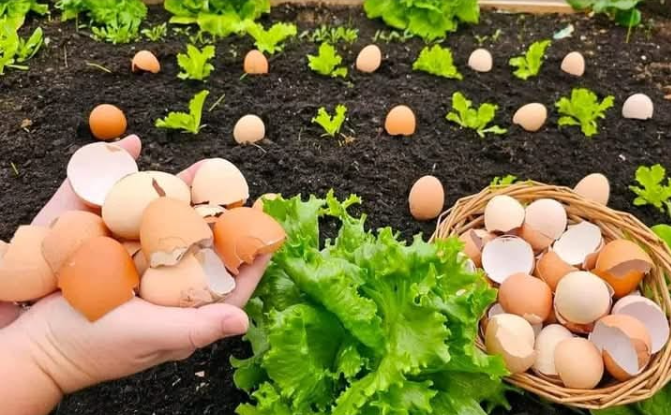ADVERTISEMENT
How to Use Eggshells for Tomato Plants: Boost Growth, Prevent Blossom End Rot & Maximize Yields 🍅
Tomatoes are one of the most popular crops for home gardeners, cherished for their vibrant flavor, culinary versatility, and nutritional value. However, growing healthy tomato plants requires more than sunlight and water—soil nutrition plays a key role, especially calcium availability.
A simple, organic, and budget-friendly way to improve tomato health is by using eggshells. Packed with calcium carbonate, eggshells can help prevent common tomato problems and improve overall plant vigor.
🥚 Why Eggshells Are Beneficial for Tomatoes
Eggshells are composed of 95% calcium carbonate (CaCO₃), which is essential for strong cell wall formation. This makes them an excellent natural source of calcium, particularly for fruiting plants like tomatoes that require extra calcium during peak production.
Key Benefits of Eggshells:
✅ Prevents Blossom End Rot – One of the most common tomato issues caused by calcium deficiency.
✅ Improves Soil Structure – Enhances drainage and root aeration.
✅ Slow-Release Nutrients – Releases calcium gradually as it decomposes.
✅ Organic and Chemical-Free – Safe for children, pets, and pollinators.
✅ Repels Slugs and Snails – Sharp crushed shells act as a natural pest deterrent.
🔧 How to Use Eggshells for Tomato Plants
Step 1: Collect and Clean Eggshells
Rinse thoroughly to remove egg residue and prevent odor or pests.
Allow to air dry completely for easy crushing or grinding.
Store in a container until ready to use.
Step 2: Crush or Grind the Eggshells
Crushed Eggshells: Break by hand or use a mortar and pestle.
Powdered Eggshells: Use a blender, food processor, or coffee grinder for quicker absorption.
🌿 5 Ways to Apply Eggshells to Tomatoes
1. Mix Eggshells Into the Soil
When to apply: Before transplanting seedlings.
Please Head On keep on Reading (>)
ADVERTISEMENT
